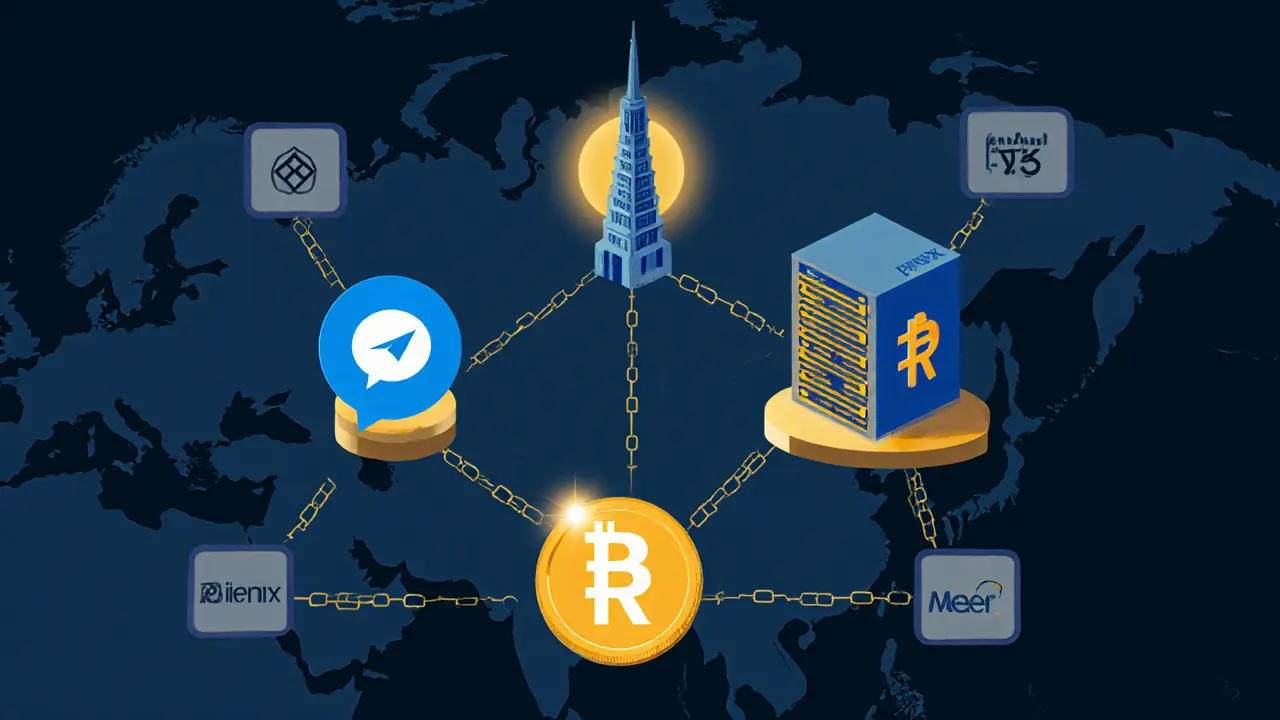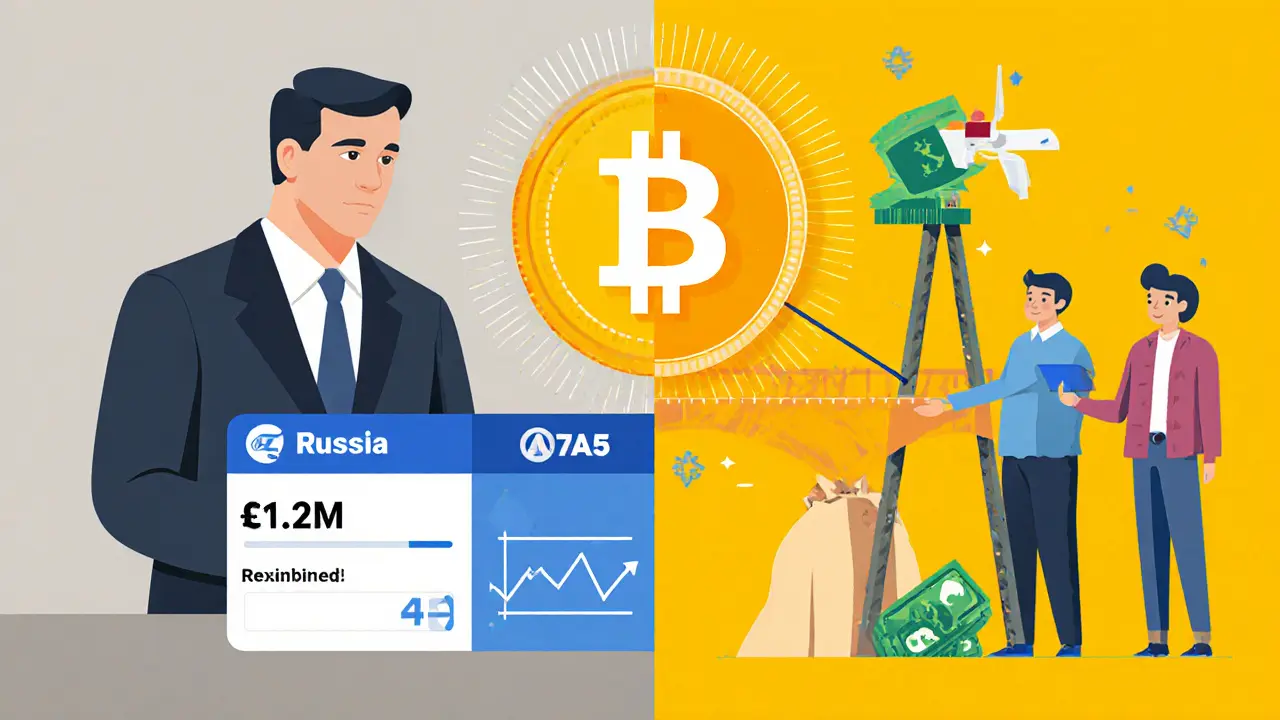Crypto Exchanges That Accept Russian Citizens in 2025
 Jul, 31 2025
Jul, 31 2025
Russian Crypto Exchange Filter
The top choice for Russian users with full Russian language support and RUB deposits via Sberbank/Tinkoff.
Best for trading obscure altcoins with over 3,600 cryptocurrencies listed.
Memecoin hub with fast mobile app and low fees, popular for Russian users with slower internet.
Specializes in high-yield staking with annual returns over 600% on some tokens.
Best for copy trading with automatic portfolio mirroring from top traders.
Focuses on derivatives with deep order books and low funding rates for futures trading.
Russian citizens can still trade cryptocurrency in 2025, but not the way they used to. The landscape has changed dramatically since 2022. Major global exchanges like Binance and Coinbase no longer accept Russian users. Domestic exchanges have been shut down or sanctioned. Yet, despite all the restrictions, crypto trading hasn’t disappeared-it’s just moved underground, into gray zones, and onto platforms that don’t ask too many questions.
Which exchanges still work for Russians in 2025?
As of July 2025, six international exchanges continue to accept Russian citizens and allow deposits in Russian rubles (RUB). These aren’t the big names you once knew-they’re the ones that slipped under the radar, stayed out of Western regulatory crosshairs, and built tools specifically for Russian users.
Bybit is the top pick. It offers full Russian language support, low 0.1% trading fees, and over 2,000 cryptocurrencies. You can deposit RUB directly via Sberbank, Tinkoff, or bank transfers. It’s not just spot trading-Bybit lets you trade futures, stake coins, take out crypto loans, and even copy trades from experienced traders. Most Russian users start here because it feels familiar, works reliably, and doesn’t freeze accounts randomly.
Gate.io wins for variety. With over 3,600 cryptocurrencies listed, it’s the go-to for traders chasing obscure altcoins and memecoins. If you’re looking for the latest token on the edge of the market, Gate.io has it. It supports RUB deposits through third-party payment processors, and its interface is clean enough for beginners but deep enough for pros.
KuCoin is the memecoin hub. It’s where Russian traders go when they want to gamble on Dogecoin clones or Shiba Inu spin-offs. KuCoin doesn’t push big institutional features-it’s all about speed, low fees, and fast listings. Its mobile app is popular because it loads quickly even on slower Russian internet connections.
MEXC is all about staking. Some tokens on MEXC offer annual returns over 600%. That’s not a typo. While most exchanges give you 3-8% on stablecoins, MEXC has pushed risky assets to insane yields. Of course, high returns mean high risk. But for Russians facing inflation and frozen bank accounts, the trade-off makes sense. MEXC also accepts RUB via card and bank transfers.
Bitget built its reputation on copy trading. Russian users can follow top traders automatically. If someone’s portfolio grew 40% last month, you can mirror their moves with one click. Bitget’s algorithm tracks performance across markets and filters out scams. It’s like having a professional trader in your pocket-no need to learn technical analysis.
Phemex focuses on derivatives. If you’re trading futures, leverage, or options, Phemex is one of the few platforms still open to Russians with deep order books and low funding rates. It’s not for casual users, but for those who know how to hedge against ruble volatility, it’s essential.
What about Russian exchanges? Are any still alive?
Official Russian exchanges are gone. Garantex, once the largest local crypto platform, was shut down by the U.S. Secret Service in March 2025. Its servers were seized. Its founders disappeared. But the users? They didn’t vanish. They moved to Grinex, a new platform registered in Kyrgyzstan. Grinex took over Garantex’s customer base, reused its old login system, and even kept the same support team. It’s not legal. But it’s functional.
Another player is Bitpapa. It’s a peer-to-peer exchange, not a traditional platform. You buy Bitcoin directly from another Russian user. Bitpapa doesn’t hold your funds-it just connects buyers and sellers. The problem? It’s been sanctioned by OFAC for helping Garantex and Hydra move money. But it still works because it runs on Telegram bots and local payment apps. Thousands of Russians use it every day.
Then there’s Meer, a Kyrgyz-based exchange launched alongside the A7A5 stablecoin. It’s small, quiet, and barely advertised. But it’s growing fast among businesses that need to pay suppliers abroad without touching Western banking systems.
The secret weapon: A7A5 stablecoin
If you want to understand how Russian crypto survives, look at A7A5. It’s a ruble-backed stablecoin-each token is worth exactly 1 Russian ruble. Unlike USDT, which can be frozen by U.S. authorities, A7A5 is backed by rubles held in Promsvyazbank (PSB) accounts through a Kyrgyz company called Old Vector LLC. No Western bank touches it. No SWIFT system touches it. It’s invisible to sanctions.
As of 2025, 41.6 billion A7A5 tokens are in circulation-worth nearly $500 million. Total transaction volume? Over $68 billion since launch. That’s more than all Bitcoin transactions in Russia combined.
Here’s the twist: A7A5 isn’t used much by individuals. Chainalysis found its trading peaks on Monday mornings and drops off sharply on weekends. That’s not retail behavior-it’s business. Russian companies use A7A5 to pay foreign freelancers, import equipment, or settle invoices with partners in Turkey, India, or Kazakhstan. They convert rubles to A7A5, send it across borders, and convert it back to local currency on the other side. No bank fees. No delays. No freezing.
Market makers pumped $2 billion in USDT into exchanges to boost A7A5 liquidity. That’s how you make a stablecoin stick. And it worked. A7A5 is now the backbone of Russia’s underground crypto economy.

Why can’t Russians use Binance or Coinbase?
It’s not that they’re banned by name. It’s that they’re blocked by system. Most global exchanges require KYC-proof of identity and address. If you’re a Russian citizen, your passport triggers automatic flags. Even if you try to use a VPN, your payment method will betray you. Card payments from Russian banks (Sberbank, Tinkoff) are now blacklisted by Visa and Mastercard. Bank transfers get caught by anti-money laundering filters.
Plus, the Russian government doesn’t want you using these platforms. In March 2025, the Central Bank of Russia introduced the “experimental legal regime” (ELR). Under this rule, only “highly qualified investors” can legally trade crypto. To qualify, you need either:
- Over 100 million rubles ($1.2 million) in securities or bank deposits, OR
- An annual income of more than 50 million rubles ($600,000)
That’s less than 0.01% of the population. Most Russians can’t meet this. So they don’t try. They go to Bybit or Bitpapa instead.
There’s a chance this rule might change. In September 2025, Russia’s Ministry of Finance admitted the thresholds are too high. They’re considering lowering them to make crypto more accessible. But until then, the system stays locked for everyone but the wealthy.
What about taxes and reporting?
Russia doesn’t ban crypto. It just wants to control it. By law, you must declare any cryptocurrency holdings to the tax authorities. If you sell and make a profit, you owe 13% income tax. The government tracks crypto wallets through bank reporting and blockchain analysis tools like Elliptic.
But enforcement is weak. Most people don’t report. Why? Because the tax system is slow, and the penalties aren’t severe enough to scare off traders. The real risk isn’t fines-it’s account freezes. If you’re using a sanctioned exchange like Bitpapa or sending large amounts of A7A5, you could get flagged. Your bank might block your account. Your card might stop working.
That’s why smart users split their activity: small trades on Bybit, big transfers via A7A5, and cash P2P on Bitpapa. They don’t leave a trail.

What’s next for Russian crypto?
The future is fragmented. The government wants control. The people want freedom. The result? A patchwork of tools: regulated but unusable platforms for the rich, and underground networks for everyone else.
A7A5 will keep growing. More businesses will adopt it. More Kyrgyz and Central Asian exchanges will pop up to handle the flow. Russian traders will keep using Bybit and KuCoin because they’re reliable. Bitpapa will survive because it’s decentralized.
But don’t expect a return to 2021. The era of easy crypto access is over. Russia is now a country where crypto isn’t illegal-it’s just harder, riskier, and hidden.
What should you do if you’re a Russian citizen looking to trade crypto?
Start with Bybit. It’s the safest, most stable option. Use RUB deposits through Sberbank or Tinkoff. Keep small amounts for trading. For long-term holdings, convert part of your portfolio to A7A5. It’s the only stablecoin that won’t get frozen.
If you need to send money abroad, use A7A5. It’s faster and cheaper than any bank. If you want to buy crypto with cash, use Bitpapa-but only for small amounts. Never transfer large sums through one platform.
Avoid anything that looks like a Russian exchange. Garantex is dead. Suex is sanctioned. Crypto Explorer is gone. Stick to international platforms that don’t mention Russia on their websites.
And remember: no one is watching you every second. But if you make big moves, you’ll leave traces. Stay low. Stay smart. And don’t trust anyone who promises “guaranteed access” to Binance or Coinbase. Those are scams.
Tejas Kansara
November 22, 2025 AT 20:34Rajesh pattnaik
November 22, 2025 AT 22:10Grinex taking over Garantex’s user base is clever-almost like a phoenix from the ashes.
Lisa Hubbard
November 23, 2025 AT 12:22Sky Sky Report blog
November 24, 2025 AT 23:58Amanda Cheyne
November 25, 2025 AT 11:23